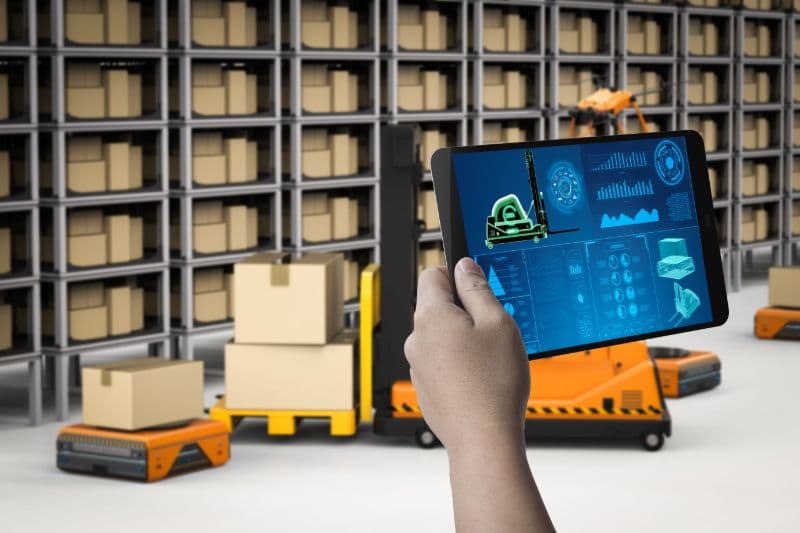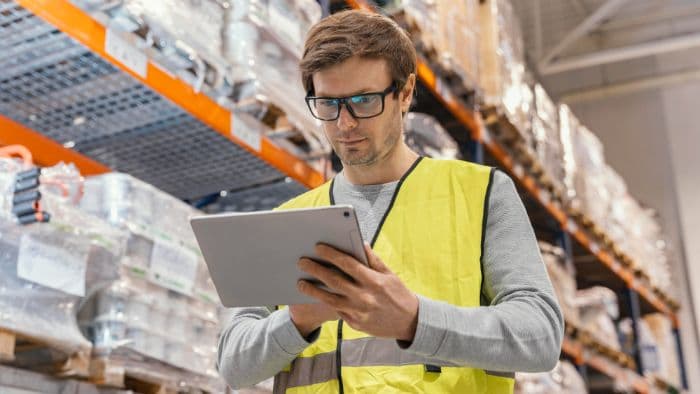For U.S. companies in manufacturing, pharma, apparel, and food, the way materials and information move inside a facility is just as critical as external deliveries. That’s why intralogistics automation is emerging as a key differentiator, boosting efficiency, safety, and flexibility while reducing costs.
In this guide, we’ll explain how intralogistics automation works, how technologies like AI, robotics, and warehouse management systems are reshaping internal logistics, and why companies across the U.S. are making it a priority for long-term growth.
Table of Contents:
- What Is Intralogistics?
- How Intralogistics Automation Works?
- How Different Industries Use Intralogistics Automation?
- What Are the Emerging Trends in Intralogistics Automation?
- Key Takeaways on Intralogistics
- Conclusion: The Future of Intralogistics
- Frequently Asked Questions (FAQs)
What Is Intralogistics?
Intralogistics refers to the optimization and automation of the flow of materials, goods, and data inside a warehouse or facility. Unlike external logistics, which moves goods between locations, intralogistics focuses on ensuring smooth and efficient internal operations.
Core Elements of Intralogistics
- Automated Storage and Retrieval Systems (ASRS) for material handling.
- Warehouse Management Systems (WMS) and Warehouse Control Systems (WCS) to coordinate workflows, inventory, and real-time equipment activity.
- Autonomous Mobile Robots (AMRs) and Automated Guided Vehicles (AGVs) for efficient transport.
- Data integration with IoT and ERP systems.
- Real-time dashboards for predictive insights.
- Parcel management software to centralize carrier accounts, control costs, and optimize shipping as part of internal logistics.
How Intralogistics Automation Works?
Intralogistics automation combines robotics, AI, and warehouse automation systems to reduce errors, accelerate processes, and lower costs. Benefits include:
- Lower overall costs by reducing surplus stock, minimizing wasted labor hours, and accelerating time-to-market
- Faster order fulfillment with real-time analytics
- Safer workplaces by automating repetitive or hazardous tasks
- Flexibility and scalability for seasonal demand and growth
Our AI-powered tools give businesses full visibility into shipping spend, help reduce unnecessary costs, and improve productivity by cutting time spent on parcel coordination. It’s a smarter way to manage internal logistics with data-driven precision. Contact us to see how Airpals can fit into your automation strategy.
How Different Industries Use Intralogistics Automation?
Intralogistics automation isn’t a one-size-fits-all solution. Different industries apply it in ways that address their specific operational challenges:
- Pharmaceuticals and Life Sciences: Precision and compliance are critical. Automated storage and WMS/WCS systems ensure traceability, batch control, and cold-chain monitoring. This reduces errors and supports FDA regulations.
- Apparel and Fashion: Fast-changing trends and seasonal peaks require agility. ASRS and AMRs accelerate garment movement, from fabric rolls in production to finished products in distribution. Intralogistics helps brands scale just-in-time production and stay competitive in the U.S. retail market.
- Food & Beverage: For perishables, hygienic handling and rapid order processing are non-negotiable. Automated conveyor systems and robotics reduce contamination risks and increase throughput.
By tailoring automation to their unique needs, industries maximize efficiency, reduce costs, and future-proof their operations.

What Are the Emerging Trends in Intralogistics Automation?
As technology evolves, intralogistics is moving beyond traditional warehouse management. Current trends are reshaping how U.S. companies think about automation:
- Robotics-as-a-Service (RaaS): Subscription-based access to AMRs and AGVs makes advanced robotics affordable. Instead of heavy upfront investment, businesses scale capacity flexibly.
- 5G Connectivity: With ultra-low latency, 5G technology enables real-time communication between robots, WMS, and IoT devices, supporting faster, more coordinated workflows.
- Predictive Analytics and AI: From demand forecasting to anomaly detection, AI gives businesses a proactive edge. Increasingly, companies also rely on real-time analytics dashboards to monitor and optimize intralogistics performance. These tools extend beyond inventory and workflows to include parcel shipping operations, where tools like AI-powered shipping label creation help reduce manual work and optimize the use of time and resources.
Key Takeaways
- Intralogistics focuses on the internal flow of goods and data inside warehouses and facilities.
- Core elements include ASRS, WMS/WCS, AMRs/AGVs, IoT integration, analytics dashboards, and increasingly, parcel management tools.
- Intralogistics Automation improves cost efficiency, speeds up fulfillment, enhances safety, and offers scalability for seasonal peaks.
- Different industries apply intralogistics uniquely: pharma (compliance & traceability), apparel (just-in-time agility), food & beverage (hygiene & speed).
- Emerging trends such as RaaS, 5G, and AI-powered analytics are reshaping how businesses optimize internal operations.
- Airpals centralizes shipping accounts, reduces errors, and helps businesses coordinate team intralogistics.
Conclusion: The Future of Intralogistics
As U.S. companies face rising costs, labor shortages, and higher customer expectations, intralogistics automation has become more than an efficiency tool, it’s a competitive advantage. From robotics and WMS to parcel shipping analytics, businesses that embrace modern intralogistics gain the flexibility and visibility needed to grow in a fast-changing market.
Airpals stands out as a key player in helping businesses modernize their internal logistics management. With AI-powered tools, FedEx/UPS account integration, and support for both same-day and multi-carrier shipping, we bring automation to everyday logistics tasks and give companies everything they need to optimize workflows. By combining data-driven insights with smarter operations, Airpals helps businesses cut waste, save time, and build resilient supply chains.
Need support with your internal logistics? Get in touch with our team and see how Airpals can help simplify your intralogistics automation strategy.

Frequently Asked Questions about Intralogistics
What is the meaning of intralogistics?
Intralogistics refers to the management, optimization, and automation of material and data flows inside a warehouse or facility. It covers every internal process, from storage and picking to packing and shipping, ensuring that goods move efficiently within the site before they are distributed externally.
What is intralogistics automation?
Intralogistics automation is the use of AI, robotics, WMS/WCS, and smart sensors to manage internal warehouse processes more efficiently, improving speed, accuracy, and cost control.
What is the difference between logistics and intralogistics?
Logistics manages the external flow of goods between locations, while intralogistics focuses on the internal flow of materials, data, and processes within a single warehouse or facility.
What are the latest trends in intralogistics solutions?
The latest trends in intralogistics solutions include AI-driven automation, robotics-as-a-service, integrated data platforms, and predictive analytics tools.
How does AI improve intralogistics efficiency?
AI improves intralogistics efficiency by automating decision-making, forecasting demand, detecting anomalies, and optimizing resource allocation in real time.




